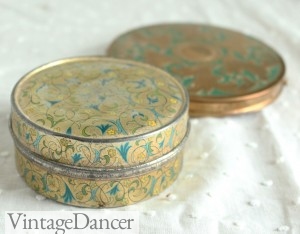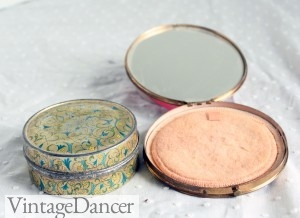The everyday object that I chose to look into the design history of was the compact mirror. Ever-faithful in a pinch after eating on the go, or on the rare occasion that I'm actually wearing makeup, my compact is an everyday essential.

The use of mirrors for personal grooming seems to have
existed since ancient times. Early humans are thought to have been dark, still
water or collected water in a container. Mirrors made of polished obsidian
stone have been seen as early as 6000 BC in Anatolia. Polished copper mirrors
have been dated to Mesopotamia in 4000 BC.

The coating of metallic surfaces with silver-mercury mixtures
has been dated circa 500 AD in China. This then led to the mirrors we know and
use today.

Hand-mirrors are a step closer to the compact in that they are
both handheld objects for checking one’s appearance, rather than a standing or
wall-mounted mirror.

The early 1900s were a time when it was not deemed appropriate
for women to be seen openly using makeup, however women were beginning to enjoy
more mobility and their makeup would require touching-up/refreshing throughout
the day or night. This lead to the need
for makeup and mirrors to be concealed in a woman’s purse. Prior to the
invention of the compact as we know it today, powders and mirrors were hidden
inside walking sticks, jewellery, hatpins, and compartments in handbags (such
as Whiting & Davis bags).

The first compact as we know it was advertised in a 1908 Sears’
catalogue. It was silver-plated and advertised as “small enough to fit in a
pocketbook.”
In 1911, R. R. Debacher filed a patent for a small hand
mirror and vanity case.


The design of the compact as we know it was inspired by the
discovery of Tutankhamen’s tomb in 1922, and so compacts became more embellished
with inset gemstones and designs.








Gorgeous mirrors! Very interesting.
ReplyDelete